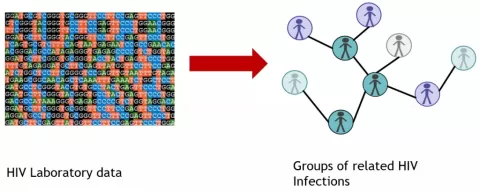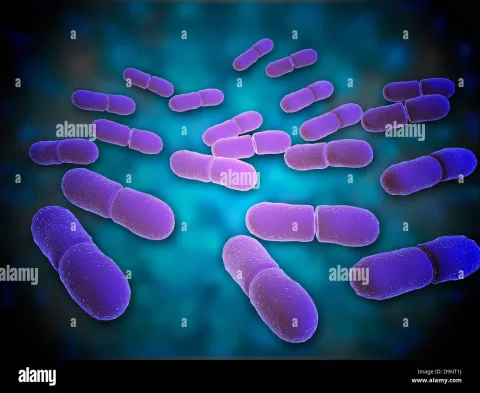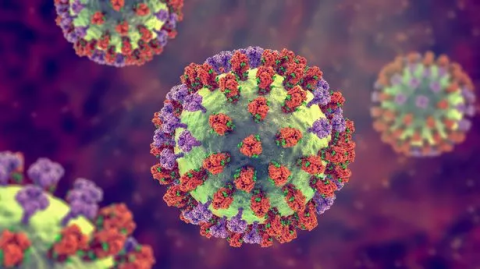SARS-CoV-2 wildlife surveillance has emerged as a crucial element in understanding the dynamics of pathogen transmission between mammals and their environments. By sampling diverse mammal communities across the United States, researchers have detected SARS-CoV-2 antibodies in new species, highlighting the complexity of wildlife disease. This ongoing surveillance not only informs us about potential risks but also sheds light on the ecological factors that facilitate the spread of such viruses. Indeed, the overlap of wildlife and human populations poses serious implications for public health, making it imperative to monitor these interactions closely. As pathogens like SARS-CoV-2 and influenza A impact both wildlife and human health, understanding their behavior in mammal communities can guide effective management and mitigation strategies.
Monitoring the spread of SARS-CoV-2 among wildlife species plays a vital role in addressing the challenges of emerging zoonotic diseases. The examination of mammalian populations allows scientists to track pathogen movement and reveal how viral infections, such as influenza A, circulate among different organisms. By identifying antibody presence in various species, this form of wildlife disease surveillance provides insights into cross-species transmission trends and risks. With mammals acting as potential reservoirs for these pathogens, understanding wildlife health is essential for preventing spillover events that could affect human populations. As research continues, it becomes increasingly clear that the intersection of wildlife biology and infectious disease is of paramount importance for safeguarding both ecosystems and human well-being.
Introduction to Mammal Communities and Pathogen Surveillance
Mammal communities serve as crucial components of the ecosystem, influencing biodiversity and the health of various habitats. Understanding the interactions within these communities, particularly in terms of pathogen transmission, has become increasingly important. Surveillance of wildlife diseases aids in identifying potential threats to other species, including humans and domestic animals. With pathogens like SARS-CoV-2 and Influenza A emerging and evolving within these communities, monitoring their spread provides vital insights into epidemiology and zoonotic potential.
In recent years, the role of mammal communities in the dynamics of pathogen transmission has been under intense scrutiny as examples of spillover events increase in frequency. The presence of SARS-CoV-2 antibodies in various mammal species signifies not only exposure to the virus but suggests an interconnectedness between wildlife health and human health. Wildlife disease surveillance is essential to preemptively address potential outbreaks of zoonotic diseases, emphasizing the need for continued and comprehensive sampling of mammal populations.
SARS-CoV-2 Wildlife Surveillance: A Growing Concern
SARS-CoV-2 wildlife surveillance has gained momentum as researchers strive to understand the virus’s impact beyond humans. Sampling efforts conducted across diverse mammal communities have indicated the presence of SARS-CoV-2 antibodies, raising questions about the ecological implications of viral transmission among wildlife species. The detection of antibodies in species such as white-tailed deer highlights the necessity of ongoing surveillance, as these populations may serve as reservoirs for further spread to other wildlife and potentially back to humans.
Regular monitoring and analysis of wildlife for SARS-CoV-2 exposure reveals changing patterns in pathogen dynamics. This surveillance is crucial not only for controlling the virus’s spread but also for assessing the ecological consequences of its persistence in animal populations. By understanding the pathways of infection and factors influencing pathogen transmission in wildlife, scientists and health authorities can develop effective strategies for preventing diseases that can spillover into humans.
Implications of Wild Mammal Co-Infection with Influenza A
The co-infection of wild mammals with both SARS-CoV-2 and Influenza A virus presents significant challenges for wildlife and public health officials. Studies have shown that different species, including raccoons and Virginia opossums, exhibit serologic evidence of impact from these pathogens, which could forecast potential new strains emerging from these interactions. This co-infection dynamic raises critical questions about respiratory diseases’ evolutionary pathways and the potential for increased virulence in virus strains.
Furthermore, understanding how mammal communities respond to concurrent infections can enhance our knowledge of wildlife disease ecology. By identifying the mechanisms driving these co-infections, we can better anticipate how pathogens like Influenza A might evolve to exploit new hosts or conditions. Effective wildlife disease surveillance helps us track these changes and informs conservation strategies for managing wildlife populations that might be increasingly vulnerable to emerging diseases.
The Role of Wildlife Disease Surveillance
Wildlife disease surveillance functions as an early warning system, offering crucial insights into how pathogens circulate within and between wildlife populations. The identification of SARS-CoV-2 antibodies across specific mammals demonstrates how ongoing monitoring can illuminate the prevalence of zoonotic diseases. The systematic collection of data allows researchers to assess the changing patterns of pathogen transmission and adapt management strategies accordingly, effectively bridging the gap between wildlife health and human health considerations.
Through careful study and observation, wildlife disease surveillance can inform ecological management practices and contribute to public health preparedness. This field of research not only seeks to protect wildlife but ultimately aims to safeguard human health against possible zoonotic spillover events. Ensuring a coordinated approach to monitoring the health of mammal communities can mitigate risks associated with emerging pathogens, particularly in areas where wildlife and human populations overlap.
Understanding Pathogen Transmission Dynamics
Pathogen transmission dynamics among wildlife populations are influenced by a myriad of ecological and environmental factors. These include population density, species diversity, and habitat fragmentation, all of which can alter the likelihood of viral transmission within mammal communities. The complex interactions among different species highlight the importance of studying how pathogens spread, as well as understanding the conditions that may foster outbreaks of diseases such as SARS-CoV-2.
Research has indicated that certain mammals may act as reservoirs for pathogens, facilitating transmission to other species, including humans. This interconnectedness underlines the need for comprehensive surveillance that accounts for both viral exposure and ecological factors. By employing a systematic approach to monitoring, researchers can unravel the complexities of pathogen dynamics, informing both ecological conservation efforts and public health policies.
Challenges of Field Sampling for Wildlife Pathogens
Field sampling for wildlife pathogens poses numerous challenges, primarily due to the elusive nature of many species and varying ecological contexts. Successfully obtaining comprehensive samples requires a blend of strategic planning and adaptive management, underscoring the importance of cooperation among researchers and wildlife management agencies. Crucially, targeting different mammal communities over different time periods can yield significant insights into pathogen circulation within wildlife.
Despite the inherent difficulties, effective field sampling can reveal vital information about the prevalence of pathogens like SARS-CoV-2 and Influenza A in wildlife populations. Continuous and intensive sampling efforts improve detection rates and provide a clearer picture of exposure patterns. This data not only enriches our understanding of wildlife health dynamics but also feeds into broader disease monitoring frameworks essential for early intervention in zoonotic disease outbreaks.
Evolving Host Range of Influenza A and SARS-CoV-2
The expanding host range of Influenza A and SARS-CoV-2 is a concerning trend in wildlife disease surveillance. As these pathogens adapt to infect a broad array of mammal species, the risk of spillover events increases significantly. Recent findings indicate that the host range of Influenza A has extended to include marine mammals and seabirds, which raises pressing questions about the evolutionary potential of these viruses and the implications for wildlife management.
As new species become susceptible to infection, surveillance efforts must adapt to encompass a broader range of hosts. This adaptability is crucial for understanding the changing dynamics of both Influenza A and SARS-CoV-2 in wildlife settings. It is crucial for researchers to regularly update and broaden their surveillance frameworks, as evolving viruses demand vigilant observation and proactive disease management strategies to mitigate risks to both human and wildlife populations.
Public Health Implications of Wildlife Pathogens
The intersection of wildlife health and public health has never been more critical, especially in the context of emerging zoonotic diseases like SARS-CoV-2. As wildlife serves as reservoirs for potential pathogens, the consequences of spillover events can have far-reaching impacts on human populations. Increased awareness of how wildlife diseases can influence public health outcomes reinforces the importance of robust wildlife disease surveillance and a One Health approach.
Integrating wildlife disease data into public health response strategies allows for informed decision-making and resource allocation in addressing potential outbreaks. Understanding the pathways through which viruses like SARS-CoV-2 transmit from wildlife to humans is crucial for developing targeted intervention strategies. Ultimately, by recognizing the link between the health of wildlife communities and human health, we can foster proactive measures to address potential health threats.
Future Directions in Wildlife Disease Research
The future of wildlife disease research hinges on interdisciplinary collaboration and innovative methodologies to enhance surveillance efforts. Integrating genomic technologies and advanced epidemiological models can usher in new understanding of pathogen dynamics within wildlife populations. This multifaceted approach will be essential for elucidating the complexities of pathogen circulation, especially in the context of rapidly evolving viruses like Influenza A and SARS-CoV-2.
Additionally, fostering collaboration between wildlife biologists, public health officials, and epidemiologists can streamline efforts to address emerging diseases. This collaborative framework is fundamental for translating research findings into actionable policies and practices that protect both wildlife and public health. Embracing these future directions will empower scientists to develop comprehensive surveillance programs that anticipate and mitigate risks associated with zoonotic diseases.
Frequently Asked Questions
What is SARS-CoV-2 wildlife surveillance and why is it important?
SARS-CoV-2 wildlife surveillance refers to the monitoring of wildlife species for evidence of SARS-CoV-2 infection and antibodies. It is crucial as it helps in understanding how the virus might spill over to humans or domestic animals, ensuring early detection and response to potential health threats. By tracking pathogens in wildlife, we can better manage diseases that may impact both public health and biodiversity.
How does SARS-CoV-2 wildlife surveillance relate to mammal communities in the U.S.?
Recent studies in the U.S. show that SARS-CoV-2 wildlife surveillance involves sampling various mammal communities. This helps identify species, such as white-tailed deer and muskrats, that may harbor the virus or antibodies against it, indicating recent exposure. Understanding these dynamics is key to tracking the virus within wildlife populations and assessing risks to human health.
What findings have emerged from recent SARS-CoV-2 wildlife surveillance in the United States?
Recent SARS-CoV-2 wildlife surveillance revealed antibodies in three new mammal species and two previously documented species. This study highlights the importance of ongoing surveillance as it detects potential spillover risks and informs public health policies in relation to wildlife disease dynamics.
Why is monitoring influenza A in wildlife important for understanding pathogen transmission alongside SARS-CoV-2?
Monitoring influenza A in wildlife is essential because both influenza A and SARS-CoV-2 can interact within mammal communities, potentially leading to co-infections. Surveillance helps track how these rapidly evolving pathogens spread across species, which can inform public health responses and wildlife management strategies to mitigate pathogen transmission.
What role do SARS-CoV-2 antibodies play in wildlife disease surveillance?
SARS-CoV-2 antibodies in wildlife are indicators of exposure to the virus, which is vital for wildlife disease surveillance. Detecting these antibodies allows researchers to assess the prevalence of the virus within different mammal communities and understand the ecological implications of pathogen transmission, paving the way for effective monitoring and control measures.
How are samples collected for SARS-CoV-2 wildlife surveillance and what does the process involve?
Samples for SARS-CoV-2 wildlife surveillance are collected opportunistically from various species across the U.S. during wildlife management activities. The process involves obtaining swab and blood samples to test for the presence of SARS-CoV-2 RNA and antibodies using techniques such as quantitative reverse transcription RT PCR and enzyme-linked immunosorbent assay (ELISA). This comprehensive approach allows for robust data collection across different ecological contexts.
What are the implications of detecting SARS-CoV-2 in wildlife species?
Detecting SARS-CoV-2 in wildlife species has significant implications for public health and wildlife management. It raises concerns about spillover events to humans and domesticated animals, emphasizes the need for sustained surveillance efforts, and highlights the interconnectedness of wildlife health and human health, thereby necessitating cross-species monitoring strategies.
How does wildlife disease surveillance contribute to our understanding of pathogen evolution?
Wildlife disease surveillance contributes to understanding pathogen evolution by revealing patterns of infection and transmission across different species. By studying SARS-CoV-2 and other pathogens like influenza A in wildlife, researchers can identify mutations, assess virulence potential, and track how these viruses adapt in various hosts, offering crucial insights into managing future zoonotic outbreaks.
| Key Points |
|---|
| Sampling of mammals across the US detected SARS-CoV-2 antibodies in 3 new species and 2 previously described ones during 2022-2023. |
| Influenza A antibodies were found in 2 previously described species, showing overlap in wildlife exposure to pathogens. |
| Wildlife disease surveillance is crucial for early warning of changing epidemiology of viruses like SARS-CoV-2 and influenza A. |
| SARS-CoV-2 has shown rapid transmission in wild deer in North America, with evidence of spillback to humans. |
| The study collected 1,172 samples from various mammal species across 20 states and Puerto Rico to study exposure to SARS-CoV-2 and IAV. |
Summary
SARS-CoV-2 wildlife surveillance is vital for understanding the interactions between animal and human health. The recent findings of SARS-CoV-2 antibodies in diverse mammal species underscore the importance of maintaining ongoing wildlife disease surveillance efforts. Monitoring these interactions can help prevent potential spillover events and further protect public health by identifying and managing risks associated with emerging pathogens.
The content provided on this blog (e.g., symptom descriptions, health tips, or general advice) is for informational purposes only and is not a substitute for professional medical advice, diagnosis, or treatment. Always seek the guidance of your physician or other qualified healthcare provider with any questions you may have regarding a medical condition. Never disregard professional medical advice or delay seeking it because of something you have read on this website. If you believe you may have a medical emergency, call your doctor or emergency services immediately. Reliance on any information provided by this blog is solely at your own risk.








